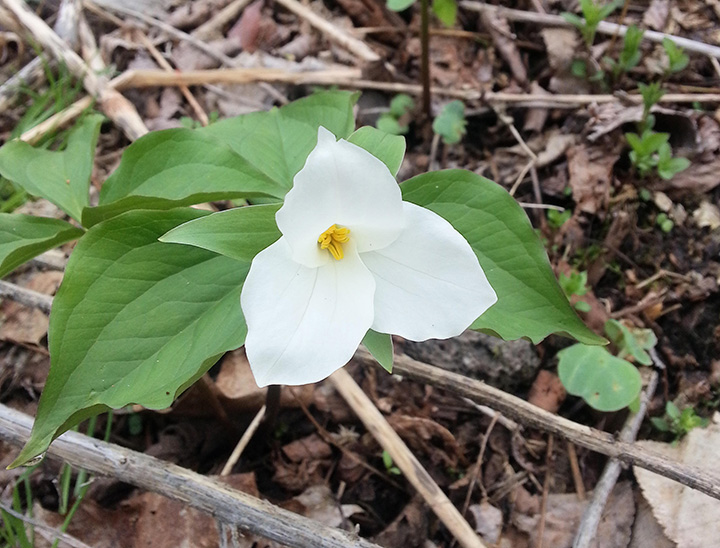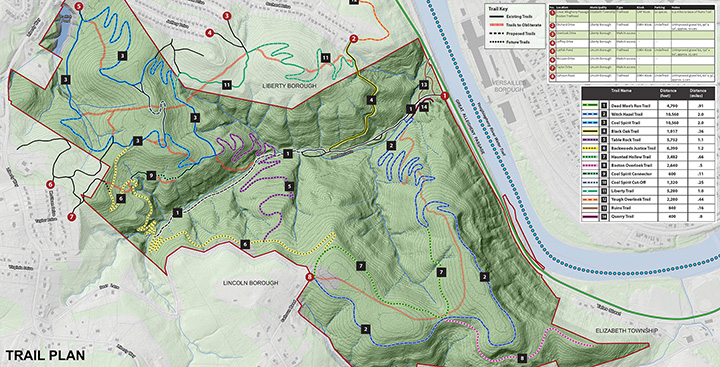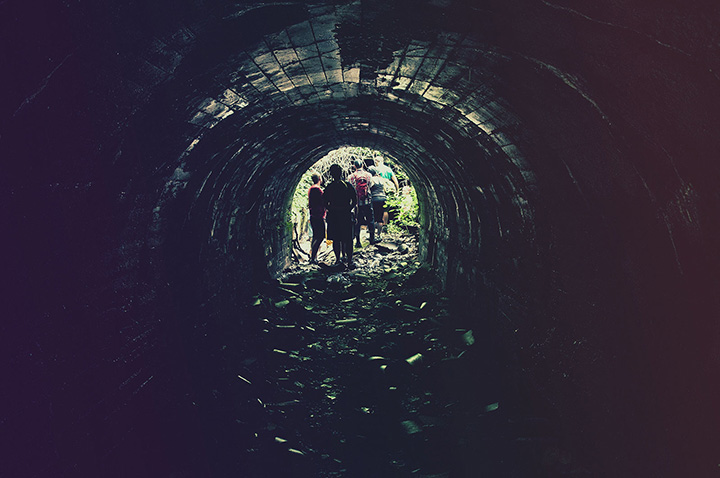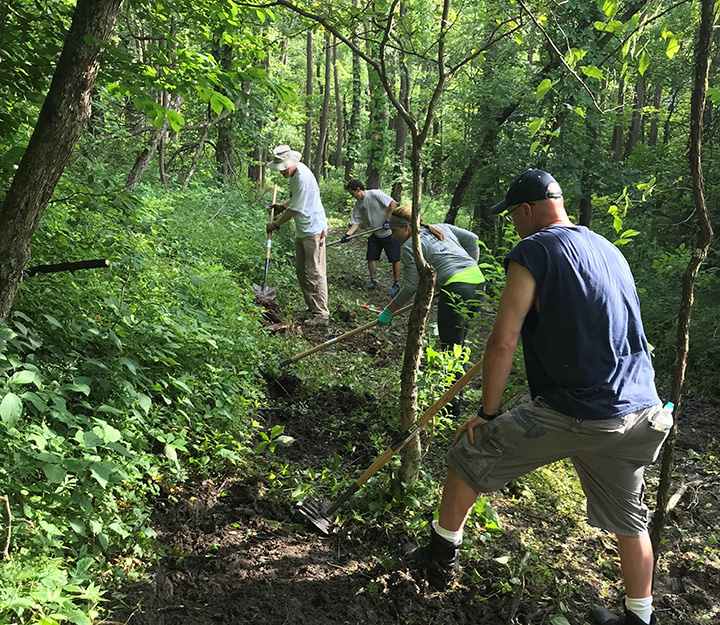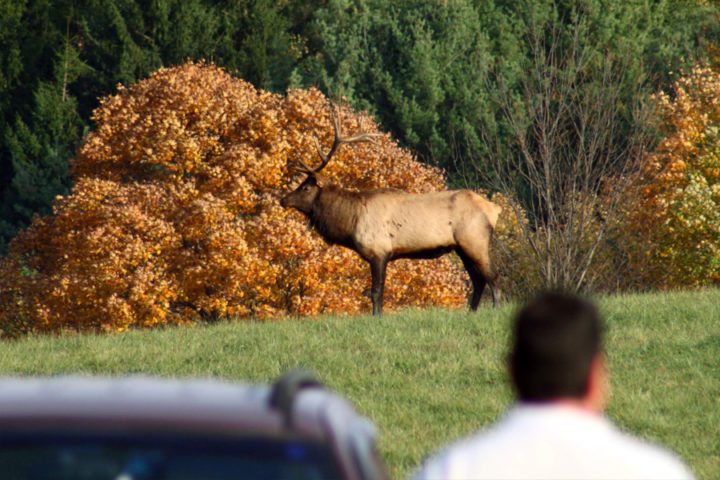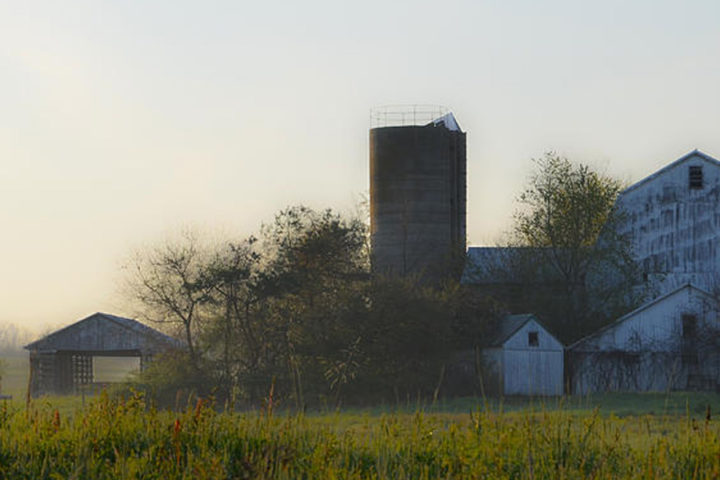Dead Man’s Hollow Wildlife Preserve—400 acres of protected forest and streams—provides peace and quiet to its visitors. Factories, strip malls, roads and traffic seem a world away.
Dead Man’s Hollow too could have been developed. However, the Allegheny Land Trust worked diligently to permanently secure this peaceful green space.
It succeeded and now owns and manages the Hollow as a wildlife preserve.
People walked the trails and absorb the surroundings even as a cool November rain fell. The steel-grey sky provided a backdrop for the brilliant yellow of slowly fading sycamore trees.
One hiker paused, leaning on his well-worn walking stick, before using it to whack a clump of plants.
“This is Japanese knotweed,” David Pencoske explained. “It isn’t native to Pennsylvania and it crowds out plants that belong here.”
Pencoske, a native of nearby White Oak, is a volunteer steward of the land. He spends his free time hiking, scouting out non-native plants and uprooting as many as one man can.
“I spend so much time in the Hollow,” Pencoske said. “The mountains in White Oak where I live were all lumbered off and roads and buildings were put up. Everything is developed.”
Until recently, Dead Man’s Hollow too could have been developed. However, the Allegheny Land Trust, a nonprofit land conservation organization, worked diligently to permanently secure this peaceful green space. It succeeded and now owns and manages the Hollow as a wildlife preserve.
The sights, sounds and activities of civilization surround but seldom intrude into the Hollow. The modest homes of Lincoln and Liberty Boroughs border much of the wildlife preserve. A hundred yards away, just across the Youghiogheny River, sits the City of McKeesport. Having lost half its population since the decline of Big Steel, the city deals with challenges common to small cities throughout the northeastern states.
A mile away in the opposite direction, US Steel’s Clairton Coke Works converts 18,000 tons of coal into coke for steel production each day. The largest coke operation in the United States, the massive facility dominates three miles of riverfront.
At one time the Hollow was an industrial center. It was the site of a 19th century quarry and an early 20th century factory. Until the late 1920s, the Union Sewer Pipe Company manufactured clay sewer pipes here. The operation supplied almost all the cities of Pennsylvania, New York and New England. If one could spy into those years from the tops of today’s tall trees, the view would be dominated by acres of flattened muddy storage yards, huge coal fired kilns, rails and road.
However, with the pipe company’s end came a new beginning. The site became the play yard of children. For some, it became a place to dump garbage, for others, a place to hunt. And as the decades passed, a forest grew.
When the Allegheny Land Trust announced its intention to conserve the land at Dead Man’s Hollow in 1995, Pencoske was skeptical. The Hollow was less than pristine, not what most people considered worth saving. He was so intrigued that he volunteered to help clean up the Hollow, a job he is still working.
The Land Trust
In 1994, The Allegheny County Natural Heritage Inventory, a study commissioned by the County of Allegheny, identified Dead Man’s Hollow as one of the most significant unprotected natural areas in the county. Like the rest of this urban county, the Hollow had been logged and otherwise used. However, it was special in that it hadn’t been crisscrossed with roads and utility lines.
The Allegheny Land Trust reviewed the County’s finding. It found that there was little protected open space in the area. It also recognized that the Hollow included a stretch of riverfront that would probably be needed for the planned 152 — mile Great Allegheny Passage walking and bicycling trail.
Considering all this, the Allegheny Land Trust decided to make conserving the Hollow its top priority. The organization reached out to the private landowners and initiated negotiations to purchase the largest parcels comprising the Hollow.
By 1998, the Trust had purchased and permanently protected 396 acres-the better part of this wooded stream valley.
The purchases were funded through grants from the County of Allegheny, the Pennsylvania Department of Conservation and Natural Resources’ Keystone Recreation, Park and Conservation Fund, the Katherine Mabis McKenna Foundation and the support of many individuals and businesses.
In 1999, the Buchanan and Flowers families donated their four acres in memory of family members. “We were happy to make a gift that will benefit people and wildlife today and 100 years from now,” Robert Buchanan said at the time.
The Trust manages the Hollow as a wild place and provides recreational and educational opportunities for the public.
“We built two-and-half miles of trails. And we cleared out twenty tons of old tires and trash. U.S. Steel workers and local supporters helped make it all happen,” relates Bill Lawrence, a board member of the Trust who participated in the original decision to pursue the conservation of the Hollow.
Lawrence drives the hour from his apartment to hike the trails and partake in the Hollow’s tranquility. He knows where the largest tree stands and how the factory pipe discards in the streambed absorb enough water to keep the ground wet in drought years.
“All kinds of people like it here.” Bill nodded towards a sturdy wooden bench. “Because of the benches that were built by U.S. Steel workers, we have people with walkers who use the trails.”
A Family Treasure
The benches provided welcome rest for Alana Redenbaugh and her father, John Kiser. When doctors advised her aging father to get more exercise, Alana brought him to the Hollow, partly because it is a short walk from her home but mostly because she loves the place.
John has since died, but the times Alana and her three children spent with him in the cool quiet of the trails are precious memories.
“It was a nice place to walk,” Alana said, recalling her days with dad. “He used to talk about the pipe factory that was here when he was a boy. I wouldn’t know anything about this place if it weren’t for him.”
John ran through the Hollow as a child, using it like generations of area children. The mysterious woods were a giant playground and a respite from adult eyes.
Today the Hollow is his grandkids’ playground and school. Alana home-schools her children and, the Hollow lends itself to many lessons.
In spring, Timothy, Katie and Nicholas study the emerging life of the season. Warmer weather begs the family to sit under a tree to chat and read good books. Winter fun is looking for animal tracks in the snow.
“It really helps the kids to visualize life without houses around,” Alana said. “We’ve taken books to the Hollow to read one or two chapters on pioneers.”
For a biology lesson, the children watch salamanders move about the muddy ground, record their whereabouts and measure them.
“I try to go down there as much as I can,” Timmy said. “We found salamanders that were black and red and some were green. Mostly they looked like regular lizards.”
People like the Redenbaughs, Lawrence and Pencoske clearly appreciate the Hollow. Local officials too express warm sentiments.
“Lincoln Borough is very proud of the conservation of Dead Man’s Hollow,” said Ronald Rosche, past borough president and councilman for 17 years. “It’s something that should be done everywhere. Saving these properties now-while there are still some left-is something that is going to be needed down the road as a place where people can go and be quiet and enjoy nature.”


